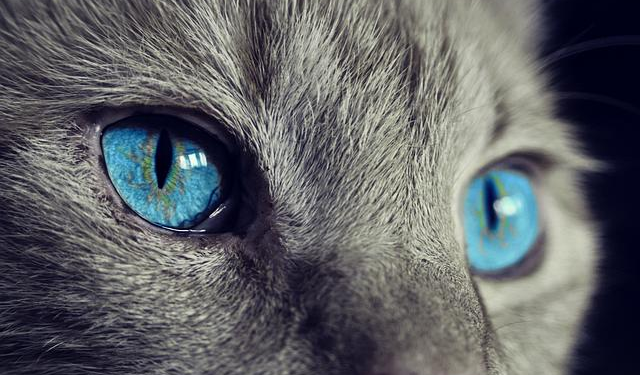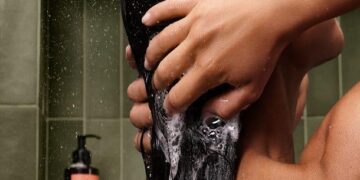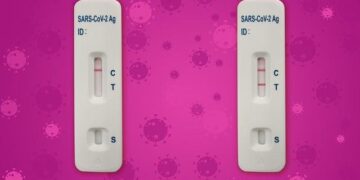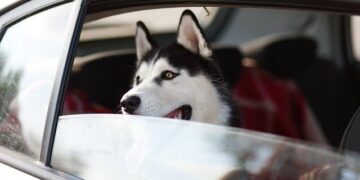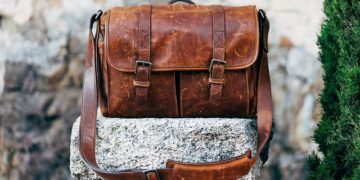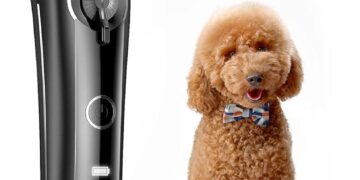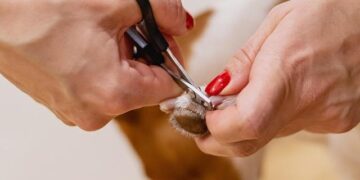Table of Contents
My journey to becoming a professional groomer didn’t start with a passion for styling or a love for the craft.
It started with a dog, a cloud of white fur named Bowie, and a profound sense of failure.
Bowie was my first Samoyed, a magnificent creature with a personality as bright as his snow-white double coat.
And that coat, I quickly learned, was a force of nature.
It defied my efforts, mocked my schedule, and threatened to consume my home in a perpetual blizzard of fluff.
I did what any responsible new dog owner would do.
I went to the pet store, read reviews, and bought what the internet promised was the “best” brush—a sleek, expensive, multi-functional tool that claimed to do it all.
I was diligent.
I brushed Bowie every single day, pulling out handfuls of loose fur.
I thought I was winning.
But the fur kept coming, and worse, grooming sessions were becoming a tense standoff.
He would squirm, I would get frustrated, and the bond I cherished with him felt strained during those moments.
The breaking point came on a quiet Tuesday evening.
While giving Bowie a deep belly rub, my fingers snagged on something dense and unyielding near his hind leg.
It was a M.T. Not just a tangle, but a hard, painful knot of impacted fur woven tightly against his skin.
I had missed it completely.
My daily “surface brushing” had been a lie, smoothing the topcoat while a disaster brewed underneath.
A wave of shame and helplessness washed over me.
I had followed all the rules, bought the “best” tool, and still, I had let my dog down, causing him discomfort I couldn’t even see.
That evening, I booked an appointment with a professional groomer.
Watching her work was a revelation, but the real change came after, when I swallowed my pride and asked her how I had failed so badly.
She smiled kindly, and what she said next didn’t just change how I groomed my dog; it changed my entire understanding of the problem.
The Epiphany: Why Your Dog Doesn’t Need a Brush, It Needs a Toolbox
My humbling experience with Bowie’s hidden mat was the catalyst that led me to enroll in a professional grooming certification program.
I was determined to understand the science and art of coat care from the ground up.
It was there, in a classroom that smelled of shampoo and clean dogs, that I had my epiphany, delivered by a master groomer with decades of experience.
She held up a single, fancy-looking brush.
“This is what most owners buy,” she said.
“They’re looking for a magic wand.” Then, she gestured to her workstation, a gleaming array of slickers, rakes, combs, and brushes of all shapes and sizes.
“But a dog’s coat isn’t a simple magic trick,” she explained.
“It’s an engine.
And you would never, ever try to fix an entire engine with a single wrench.”
That was it.
The “Mechanic’s Toolbox” analogy.
It clicked into place with the force of a thunderclap.
My mistake wasn’t in my choice of a single tool; it was in the belief that a single tool could ever be the solution.
A dog’s coat is a complex, multi-layered system.1
It has a protective topcoat, a dense insulating undercoat (in many breeds), areas prone to friction and tangling, and skin that needs to be stimulated and kept healthy.
Each of these components presents a different “job,” and each job requires a specialized tool.
Trying to use one brush for everything is like trying to use a socket wrench to change a tire, check the oil, and polish the chrome.
You might make some progress, but you’ll do a poor job and probably cause some damage along the Way.
This new paradigm reframed everything.
I stopped searching for the “best brush” and started learning about the essential tools that belong in every serious groomer’s toolbox.
I learned to see them not as interchangeable objects, but as a team of specialists:
- The Breaker Bar (For Tough Jobs): These are your heavy-lifters for the most challenging tasks. This category includes Undercoat Rakes and Dematting Tools, designed to power through impacted undercoats and break up serious tangles without damaging the healthy coat.2
- The All-Purpose Wrench (The Daily Driver): This is the Slicker Brush. It’s the versatile workhorse you’ll reach for most often for general detangling, removing loose surface hair, and preparing the coat for more detailed work.4
- The Torque Wrench (For Precision & Quality Control): This is the Metal “Greyhound” Comb. Its job is less about raw power and more about verification. It’s the tool that tells you, with unflinching honesty, if the job is truly done right down to the skin.6
- The Polishing Cloth (For the Final Shine): This is the Bristle Brush or Rubber Curry Brush. These are your finishing tools, used to remove fine debris, stimulate the skin, and distribute natural oils for a healthy, vibrant sheen.2
Understanding this framework is the first and most critical step toward mastering at-home grooming.
It shifts you from being a frustrated consumer to an empowered caretaker.
Before we dive into the specifics of each tool, here is a quick-reference guide to help you start building your dog’s custom toolbox.
Table 1: The Ultimate Dog Grooming Toolbox Cheat Sheet
| Coat Type & Example Breeds | Core Challenge | The Essential Toolbox (Must-Haves) | Recommended Upgrade (For Pro Results) | Top-Tier Brand Examples |
| Short & Smooth (Boxer, Beagle, Pit Bull, Dalmatian) | Shedding, Dander, Coat Shine | Rubber Curry Brush + Bristle Brush 8 | De-shedding Tool (used sparingly) 8 | Kong, Burt’s Bees, FURminator |
| Dense Double Coat (German Shepherd, Husky, Samoyed, Golden Retriever) | Heavy Shedding, Undercoat Impaction, Matting | Undercoat Rake + Slicker Brush + Metal Comb 3 | High-Velocity Dryer 3 | FURminator, Chris Christensen, Andis |
| Long & Silky Drop Coat (Yorkie, Maltese, Shih-Tzu, Afghan Hound) | Frequent Tangling, Matting, Hair Breakage | Pin Brush + Soft Slicker Brush + Metal Comb 9 | Detangling Spray, Rounded-Tip Scissors 5 | Chris Christensen, Kenchii, Cowboy Magic |
| Curly & Wavy Coat (Poodle, Doodle, Bichon Frise, Portuguese Water Dog) | Matting from the Root, Dense Tangles | Firm Slicker Brush + Metal Comb 7 | High-Velocity Dryer, Detangling Spray 11 | Chris Christensen, Les Poochs, Wahl |
| Tough & Wiry Coat (Most Terriers, Schnauzer, Irish Wolfhound) | Dead Hair Buildup, Maintaining Texture | Slicker Brush + Stripping Knife/Rake 6 | Terrier Palm Pad 13 | Master Grooming Tools, Chris Christensen |
The Foundational Toolbox: Three Tools Every Serious Dog Owner Must Understand
Once I embraced the “toolbox” mindset, my education truly began.
I learned that while dozens of tools exist, a mastery of three foundational types can solve 90% of grooming challenges.
These became the core of my professional kit and the solution to Bowie’s chronic coat problems.
Understanding not just what they are, but how and why they work, is the key.
1. The Workhorse: The Slicker Brush
The slicker brush is the cornerstone of most grooming toolboxes.
It’s characterized by a flat or curved head packed with fine, short wire pins that are bent at an angle.4
This design allows the brush to efficiently grab loose fur, work through tangles, and break up minor mats.
For most coat types that aren’t short and smooth, this is your primary, go-to tool for everyday maintenance.
However, not all slicker brushes are created equal, and this is where many owners go wrong.
The quality of the pins is paramount.
Cheaper slickers can have sharp, scratchy pins that irritate the skin, leading to “brush burn” and a dog that dreads grooming.14
High-quality brushes, like the
Chris Christensen Big G Slicker, are a favorite among professionals for a reason.15
Their pins are longer, more flexible, and polished to glide through the coat without scratching the skin.16
You’ll also find variations:
- Soft vs. Firm Slickers: Soft slickers are for finer, more delicate coats or for puppies and seniors, while firm slickers are needed for dense, thick, or coarse coats.13
- Coated Tips: Some slickers have tiny protective balls on the pin tips, which offer an extra layer of protection against skin irritation, making them a great choice for beginners or dogs with very sensitive skin.14
Investing in a high-quality slicker brush was the first step in turning my grooming sessions with Bowie from a battle into a productive activity.
It effectively removed loose hair from his topcoat and began to address the density of his undercoat in a way my old “all-in-one” tool never could.
2. The Inspector: The Metal “Greyhound” Comb
This is the tool that separates the amateurs from the pros.
Most owners think a comb is just for getting out tangles.
A professional groomer knows its most important job is finding them.
This is the heart of the “Work & Check” system.
After you believe you have thoroughly brushed a section of your dog with a slicker or rake, you must follow up with a sturdy metal comb.
The logic is simple but brilliant.
A flexible brush can glide right over the top of a forming mat, especially one tight against the skin, giving you a false sense of accomplishment.
A rigid metal comb cannot be fooled.
If there is any snag, any hidden tangle, the comb will stop, alerting you to an area that needs more work.6
This single step would have prevented the painful mat I found on Bowie.
A good “greyhound” comb, like the classic Andis Steel Grooming Comb, is typically dual-sided, with wide teeth on one half for tackling larger areas and checking the undercoat, and fine teeth on the other for delicate areas like the face and paws.2
The process is non-negotiable for any long, curly, or double-coated breed: you brush an area, then you comb it.
If the comb glides through from skin to tip, you can move on.
If it snags, you go back to the brush.
This is your quality control.
3. The Specialist: The Undercoat Rake & De-shedding Tool
For dogs with a double coat—that dense, fluffy under-layer beneath the glossy topcoat—a slicker brush alone is often not enough.
This is where the heavy-duty specialists come in.
It’s crucial to understand the difference between an undercoat rake and a de-shedding tool, as they serve distinct purposes.
- The Undercoat Rake: Think of this as an excavator. It has one or two rows of long, sturdy, widely-spaced pins designed to penetrate deep through the topcoat and reach the dense undercoat.4 Its job is to remove large volumes of dead, packed-in undercoat, especially during seasonal “coat blows” when dogs shed profusely.3 Using a rake is the first step in tackling a thick, shedding coat. It does the bulk of the work, preventing the undercoat from becoming “impacted,” which is a primary cause of matting and can lead to overheating.6
- The De-shedding Tool: The most famous example is the FURminator. This is not a brush; it’s a tool with a fine-toothed, bladed edge designed to grab and pull out an astonishing amount of fine, loose undercoat hair.3 Think of it as a finishing tool for shedding control. After you’ve used a rake and a slicker, a few passes with a de-shedding tool can dramatically reduce the amount of fur you find around your house.
A critical word of caution: De-shedding tools must be used with a light hand and sparingly.
Because they have a bladed edge, overuse or excessive pressure can scratch the skin or, worse, cut and damage the healthy guard hairs of the topcoat.3
Never use it on a matted or wet coat.
For my work with Bowie, the undercoat rake became my seasonal savior, while the de-shedding tool was a bi-weekly touch-up to keep shedding under control.
Coat-Specific Blueprints: Customizing Your Dog’s Perfect Toolbox
With a grasp of the foundational tools, you can now build a custom toolbox tailored to your dog’s unique coat.
The following blueprints are the exact workflows I use as a professional groomer, designed to address the specific challenges of each coat type.
Blueprint 1: The Short & Smooth Coat (Boxer, Pit Bull, Beagle)
These dogs may seem low-maintenance, but they shed constantly and can develop dander and a dull coat if not groomed properly.
The goal here is shedding management and promoting shine.
- Your Toolbox: A Rubber Curry Brush (like the Kong ZoomGroom) and a soft Bristle Brush.1
- The Workflow:
- Loosen & Massage: Begin with the rubber curry brush. Using firm, circular motions all over the dog’s body, the soft rubber nubs will act like magnets for loose hair while giving your dog a pleasant massage that stimulates circulation.3 This is especially effective during bath time, as it helps work the shampoo in and releases even more dead hair.8
- Polish & Shine: Follow up with the bristle brush. Brush in the direction of hair growth with long, sweeping strokes. This removes any remaining loose hair and dander lifted by the curry, and most importantly, it distributes the dog’s natural skin oils down the hair shafts, resulting in a healthy, glossy finish.2
Blueprint 2: The Dense Double Coat (German Shepherd, Husky, Golden Retriever)
This is the coat type that overwhelmed me with Bowie.
The primary challenges are managing the massive seasonal sheds (“coat blow”) and preventing the dense undercoat from compacting and matting.
- Your Toolbox: An Undercoat Rake, a Slicker Brush, and a Metal Comb are non-negotiable.3 A de-shedding tool is a highly recommended upgrade.
- The Workflow:
- Excavate the Undercoat: Start with the undercoat rake, especially during shedding season. Work in sections, using gentle but firm strokes in the direction of hair growth to pull out the dead, fluffy undercoat. Focus on the areas where it’s thickest, like the hindquarters, chest, and neck ruff.3
- Detangle the Topcoat: Next, go over the entire coat with your slicker brush. This will smooth the topcoat, remove any remaining loose hair, and catch any surface tangles the rake might have missed.
- Perform the Quality Check: This is the most critical step. Take your metal comb and systematically comb through every section you just brushed, making sure the comb’s teeth reach all the way to the skin.6 If you hit a snag, go back to the slicker brush on that spot until the comb glides through freely.
Blueprint 3: The Long & Silky Drop Coat (Shih-Tzu, Maltese, Yorkie)
These breeds have hair that grows continuously, much like human hair.
It’s prone to tangling and breakage, and mats can form quickly, especially in high-friction areas.
- Your Toolbox: A Pin Brush, a soft Slicker Brush, and a fine-toothed Metal Comb.6
- The Workflow:
- Gentle Daily Detangling: For daily grooming, the pin brush is your best friend. Its long, widely spaced pins (often with polished or coated tips) glide through long hair, separating strands and preventing tangles without causing the static and breakage that a harsher brush might.4
- Address Minor Tangles: For more stubborn tangles or areas that are starting to knot, switch to the soft slicker brush. Use it gently to pick apart the tangle. A good detangling spray can be a lifesaver here.11
- Mandatory Comb Check: As with the double coat, you must finish with the metal comb. Pay extra close attention to friction spots: behind the ears, under the front legs (“armpits”), on the belly, and around the collar area. These are where mats almost always start.6
Blueprint 4: The Curly & Wavy Coat (Poodle, Doodle, Bichon Frise)
This is perhaps the most deceptive coat type.
It looks soft and fluffy, but it is incredibly prone to matting right at the root.
If you don’t use the correct tools and technique, you can easily create a “pelted” coat (one giant mat) that has to be shaved off.
- Your Toolbox: A firm Slicker Brush and a Metal Comb. These are not optional; they are essential for survival.7
- The Workflow:
- Fluff and Separate: This is counter-intuitive but crucial. You must use the slicker brush against the direction of hair growth.12 This technique, called back-brushing, lifts the curls away from the skin, allowing the brush pins to penetrate all the way to the base and separate the hair at the root where mats begin.
- The Immediate Comb Check: Do not wait. Immediately after back-brushing a section, follow with your metal comb, again ensuring it goes from skin to tip. The combination of the slicker and comb is the only way to guarantee a truly tangle-free curly coat.11 If you can’t get a comb through it, it’s not brushed.
Blueprint 5: The Tough & Wiry Coat (Most Terriers, Schnauzers)
The hallmark of a wire coat is its harsh, crisp texture, which is designed to be weather- and dirt-resistant.
Pet versions of these breeds are often clipped, which softens the coat, but the proper way to maintain texture is through a process called hand-stripping.
- Your Toolbox: A Slicker Brush is essential for general grooming. For maintaining proper texture, you’ll need specialized tools like a Stripping Knife/Rake or a Terrier Palm Pad.6
- The Workflow:
- General Maintenance: For a clipped pet trim, a slicker brush is effective for removing loose, dead hair from the dense coat and keeping it tidy.
- Maintaining Texture: Hand-stripping involves manually pulling out the dead outer coat to encourage a new, harsh coat to grow in. This is an advanced technique, but tools can assist. A stripping knife (which is dull and used to grip hair, not cut it) or a short-toothed rake can help pull out the blown coat.6 A Terrier Palm Pad, like the one from
Chris Christensen, is a handle-less pad with soft pins that helps grip the hair for stripping and finish the coat.13
Pro-Level Techniques: How to Use Your Tools for Flawless Results
Owning the right tools is half the battle.
Using them with the right technique is what elevates your grooming from a chore to a craft.
These are the three fundamental techniques that I teach every new dog owner, the ones that truly transformed my sessions with Bowie.
1. The Art of Line Brushing: Your Secret to a Mat-Free Undercoat
This is the single most effective technique for any dog with a dense or double coat.
Simply running a brush over the top of the fur is ineffective.
Line brushing ensures you reach every single hair, right down to the skin.
- Step 1: Have your dog lie comfortably on its side. Start at a low point, like the back leg.
- Step 2: With your free hand, create a horizontal part in the fur, so you can see a clear line of skin.
- Step 3: Hold the hair above the part up with your hand. Take your slicker brush or undercoat rake and brush the small layer of hair below the part line, brushing down and away from the skin.2
- Step 4: Move your part up by about half an inch, revealing a new layer of unbrushed hair. Brush this new layer down.
- Step 5: Repeat this process, working your way up your dog’s body in methodical lines. It’s slow, but it is the only way to be 100% certain you have brushed the entire undercoat.
2. The Comb Check: The 10-Second Guarantee
As emphasized before, this is your non-negotiable final step for any section you brush on a dog with a coat prone to matting.
- The Technique: After line-brushing a section, take your metal greyhound comb. Hold it so the pins are perpendicular to the skin.
- The Test: Gently glide the comb through the section you just brushed, from the skin all the way to the tips of the hair.
- The Result: If it moves through smoothly without any pulling or snagging, that section is clear. You can move on. If it catches, you’ve found a hidden tangle. Do not force the comb. Put it down, pick up your slicker brush again, and work on that specific spot until the comb can pass through freely.6
3. Safe Dematting: What to Do (and NOT Do) When You Find a Tangle
Inevitably, you will find a tangle.
How you handle it determines whether it’s a minor inconvenience or a major problem.
- What to Do: For a small, manageable mat, first try to gently pull it apart with your fingers. Then, apply a dot of corn starch or a silicone-based detangling spray (like Cowboy Magic) directly onto the mat to provide slip.7 Hold the hair at the base of the mat, against your dog’s skin, to prevent pulling. Then, use the corner of your slicker brush or the teeth of your metal comb to gently pick at the mat from the
outer edges inward, slowly breaking it apart. - What NOT to Do: Never, ever try to cut a mat out with scissors. A mat pulls the skin up into its base, and it is horrifyingly easy to cut your dog’s skin, which will be hidden by the surrounding fur.20 If a mat is too tight, too large, or in a sensitive area, the safest and kindest thing you can do is admit defeat and call a professional. Your dog’s safety is more important than your pride.
Conclusion: More Than a Groom—Building a Bond Through Better Brushing
Looking back, the shame I felt that day I discovered Bowie’s mat was a gift.
It shattered the “One-Brush Myth” and set me on a path to a deeper understanding of my dog’s needs.
Today, grooming is no longer a battle.
It’s a quiet, predictable ritual.
When I bring out his toolbox—his rake, his slicker, his comb—he lies down calmly, knowing what’s coming.
He trusts me.
The goal of this guide is to give you that same gift, without the painful learning curve.
It’s about letting go of the search for a single magic wand and embracing your role as your dog’s personal, expert mechanic.
By building a custom toolbox tailored to your dog’s specific coat and by mastering a few simple, professional techniques, you transform grooming from a dreaded chore into a powerful act of communication and care.1
You are ensuring their comfort, protecting their health, and strengthening the incredible bond you share.
You are not just brushing your dog; you are tending to their well-being, one methodical, loving stroke at a time.
You are their trusted groomer, and you have everything you need to do the job perfectly.
Works cited
- GROOMING YOUR DOG, accessed August 13, 2025, https://images.akc.org/pdf/public_education/Grooming.pdf
- Grooming Tools Guide – PetEdge, accessed August 13, 2025, https://www.petedge.com/grooming-tools-guide
- Best Brushes for Double Coated Dogs: Groomer-Approved Tools To …, accessed August 13, 2025, https://www.riverviewgrooming.com/post/best-brushes-for-double-coated-dogs-groomer-approved-tools-to-keep-the-shed-under-control
- All Types of Dog Brushes for Every Coat: the Ultimate Guide – Welltayl, accessed August 13, 2025, https://welltayl.com/blogs/news/types-of-dog-brushes
- Top Recommended Grooming Tools, accessed August 13, 2025, https://www.shearstandardsog.com/resources/top-recommended-grooming-tools
- Brush Guide — Lucky Dog Grooming, accessed August 13, 2025, https://luckydogok.com/new-page
- Best tools for grooming long curly haired dog? : r/DogAdvice – Reddit, accessed August 13, 2025, https://www.reddit.com/r/DogAdvice/comments/mqajl2/best_tools_for_grooming_long_curly_haired_dog/
- The Best Brushes for Short-Haired Dogs: Keep Shedding Under Control – Riverview Grooming, accessed August 13, 2025, https://www.riverviewgrooming.com/post/the-best-brushes-for-short-haired-dogs-keep-shedding-under-control
- Dog Grooming Brushes for Every Coat Type – Animal Behavior …, accessed August 13, 2025, https://www.animalbehaviorcollege.com/blog/animal-career-advice/grooming/dog-grooming-brushes-for-every-coat-type/
- The Best brushes for Long-Haired pets – Kahoots, accessed August 13, 2025, https://kahootsfeedandpet.com/blogs/blog/which-pet-brush-is-best-for-long-haired-dogs-and-cats
- Curly Coated Dog Grooming Guide – Underdog Pets, accessed August 13, 2025, https://www.underdogpets.com/blogs/news/curly-coated-dog-grooming-guide
- DOG GROOMING GUIDE: CURLY COATS – Wahl UK, accessed August 13, 2025, https://www.wahl.co.uk/content-hub/product-guides/dog-grooming-guide-curly-coats/
- Mastering Clipper Blade Care: Essential Guide for Student …, accessed August 13, 2025, https://christiesdirect.com/blog/the-essential-guide-to-dog-grooming-brushes.html
- A Complete Guide to the Different Types of Brushes for Pet Fur – Bubbly Paws, accessed August 13, 2025, https://www.bubblypaws.com/barkblog/a-complete-guide-to-the-different-types-of-brushes-for-pet-fur
- 10 Essential Grooming Tools Pet Owners Need At Home, accessed August 13, 2025, https://groovygroomingsc.com/blog/10-essential-grooming-tools-pet-owners-need-at-home
- Chris Christensen Products for Double Coats, accessed August 13, 2025, https://chrischristensen.com/collections/double-coat-products
- The 10 Best Dog Brushes, Tested and Reviewed – The Spruce Pets, accessed August 13, 2025, https://www.thesprucepets.com/best-dog-brushes-4172609
- Large Coated Tip Slicker Brush – Tweezerman, accessed August 13, 2025, https://tweezerman.com/products/large-coated-tip-slicker-brush
- Types of Dog Brushes and their Uses | PetSmart, accessed August 13, 2025, https://www.petsmart.com/learning-center/dog-care/the-art-of-grooming-your-dog/A0134.html
- How to groom different dog coat types | Animates Pet Supplies, accessed August 13, 2025, https://www.animates.co.nz/articles/how-to-groom-different-dog-coat-types
